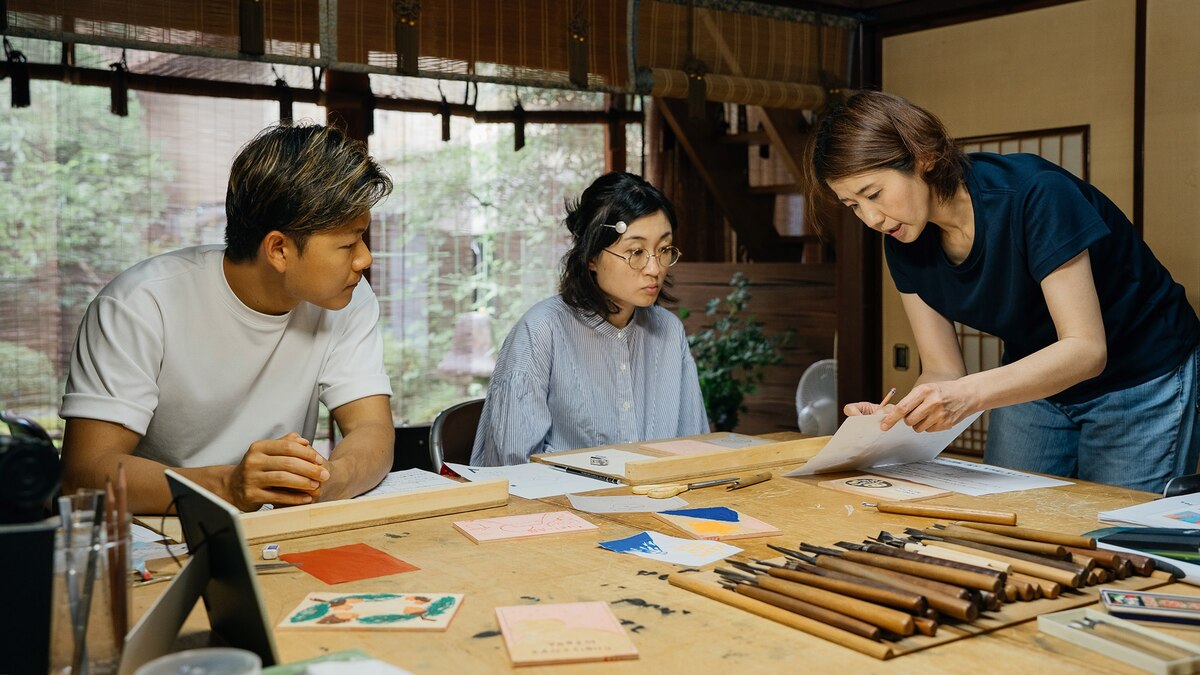Now Reading: Find your creative side in Toyama’s living craft village in Japan
-
01
Find your creative side in Toyama’s living craft village in Japan
Find your creative side in Toyama’s living craft village in Japan

In a town hewn from wood, immerse yourself in traditional arts and get hands-on in a craft studio.

Surrounded by mountains in central Japan’s Toyama Prefecture, Inami lives and breathes wood. Out of a population of just 8,000, around 150 people work as woodcarvers and the town is a kind of open-air museum to showcase their skills.
Photograph by Toyama Tourism Promotion Organization
This article was produced by National Geographic Traveller (UK).
Keep your eyes peeled when wandering the stone-paved streets of Inami. The town’s carpenters, of whom there are many, have tucked dozens of wooden carved cats into unexpected locations, from a svelte feline that doubles as a sweet shop’s door handle to a pleased-looking puss pouring itself a cup while strategically positioned above a sake shop’s door. Cat-spotting is just one playful way to explore the craft culture of one of Japan’s top woodworking towns, which has been chiselling the material since the 1700s. Surrounded by mountains in central Japan’s Toyama Prefecture, Inami lives and breathes wood. Out of a population of just 8,000, around 150 people work as woodcarvers and the town is a kind of open-air museum to showcase their skills. There are shop signs, a telephone booth and even a bus stop all carved out of wood. Travellers who spend a night here get a total immersion in the local craft culture and also help support the preservation of the town.

On Yokamachi-dori Street, the town’s main street, you’re welcome to watch the carvers at work through the windows and pop inside for a closer look as they labour over wooden panels called ranma and shishigashira (lion’s head) masks.
Photograph by Toyama Tourism Promotion Organization
The craft culture
Follow the tap and clack of chisels and the scent of camphor to woodworkers’ studios, several of which line the town’s main street, Yokamachi-dori. You’re welcome to watch the carvers at work through the windows and pop inside for a closer look as they labour over wooden panels called ranma and shishigashira (lion’s head) masks, deftly using a number of different types of chisels for each item.
At the end of Yokamachi-dori, see the source of Inami’s woodcarving culture at Zuisen-ji, one of Japan’s largest wooden temples, where generations of craftspeople have honed their skills by creating intricate carvings made from zelkova wood, including several dragons and lions. A 10-minute walk north east takes you to the Inami Sculpture General Hall, which houses more than 200 pieces carved in Inami, from folding screens to a guitar. Pop a coin into the museum’s gacha-gacha (capsule toy machine) and get your own palm-sized shishigashira mask.
You can help to support, as well as admire, Inami’s craft culture, which has now expanded to encompass more than woodworking, with a stay at the town’s Bed and Craft hotel. Its individual villas have all been renovated by local artisans. They also offer guests exclusive private experiences — which the hotel describes as short ‘apprenticeships’ — during which you make your own keepsake item, whether it be a carved wooden spoon or lacquered chopsticks.

Bed and Craft further supports local creative livelihoods by offering guests hands-on crafting experiences, for which artisans get paid for their time and skill.
Photograph by Bed and Craft
The stay
Bed and Craft’s mission is to help revitalise Inami’s craft culture and breathe new life into the historic town. The hotel’s check-in is in a small townhouse a few hundred yards from the north end of Yokamachi-dori, but guests stay in six once-vacant buildings that are scattered around Inami, immersing them in local life. Each private self-contained dwelling is decorated in a contemporary style with the work of a single local artisan, who receives a portion of the guest’s nightly fee.
Travellers can pick from options including the former home of a wealthy silk producer adorned with work by a lacquerware artist, and a long-shuttered restaurant revived by a wood carver’s striking craftsmanship, from an ornately detailed wooden chandelier to a deer head carved into the staircase.
The hotel further supports local creative livelihoods by offering guests hands-on crafting experiences, for which artisans get paid for their time and skill. After a day of perfecting your craft and admiring others’, you can have a multi-course kaiseki meal served in your house, or make your way to Italian restaurant Nomi, in the hotel’s main building, where dishes are smoked with wood chips sourced from the town’s carvers.
Published in the May 2025 issue of National Geographic Traveller (UK)
To subscribe to National Geographic Traveller (UK) magazine click here. (Available in select countries only).


























